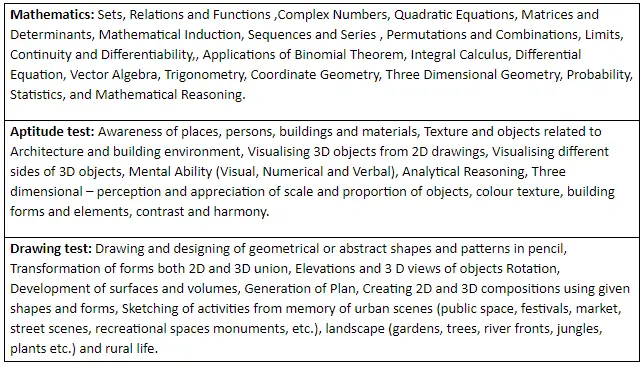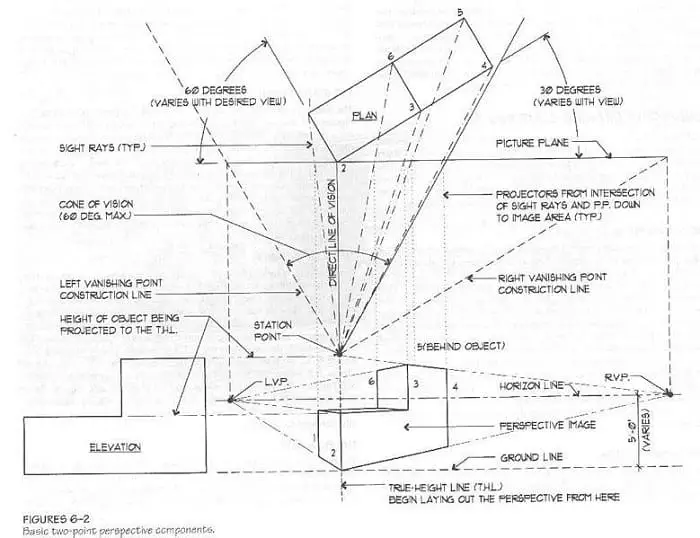Before we discuss time and its usage, let me tell you that this article is about preparing for the B. Planning entrance exam. We will discuss a bit about ‘Planning’, the entrance exam pattern and syllabus, and then, the time management tips you can use to ace the exam. However, the time management tips here can easily be employed to prepare for any competitive exam you are appearing for.
What is B. Planning?
The Bachelor of Planning program concerns itself with courses like Fundamentals of Urban and Regional Planning, Basic Architectural Design, and Resource Development and Management. Unlike Architecture, it focuses on the optimum use of resources to create environments that are both functional and comfortable for the users.
There is one basic difference between Architecture and Planning. Architecture is about designing individual buildings and rarely looks beyond the building’s site. Planning, on the other hand, is related to designing cities, towns, and neighborhoods. It hardly ever gets into the minutiae of designing a particular building. B. Arch program is usually five years long while B. Planning program has a duration of four years.
Major B. Planning Entrance Exams in India
The admission procedure to both B. Arch and B. Planning programs is same. The two main exams to get admission in these programs are JEE Main (Paper 2), and NATA (National Aptitude Test in Architecture). One needs to have cleared Class 12 (PCM stream) with at least 50% in Math to be eligible to sit for these exams.
You’ll need to understand the pattern and syllabus of these two exams to be able to form the best strategy to prepare for the B. Planning entrance exam.
JEE Main (Paper 2) Syllabus and Pattern
Students aspiring to do B. Planning from IIITs, NITs, GFTIs and other participating institutes (including SPA Delhi) need to take JEE Main Paper 2. One should be older than 25 years of age to apply for the exam (with a 5-year relaxation for SC, ST, and PwD students).
Do note that if you are seeking admission in NITs, IIITs, or GFTIs, you need to score at least 75% marks in Class 12 board. You are allowed to try a maximum number of three times to crack the exam.
The exam has three sections:
- Mathematics,
- Aptitude, and
- Drawing or Sketching Test.
The Math section has 30 questions worth 120 marks (4 marks for each question) while the Aptitude section carries 50 questions worth 200 marks. The Drawing test has 2 questions which are worth 70 marks. The total number of questions asked in the exam is 82 which are worth 390 marks.
The Aptitude section has questions on General Awareness, Analytical Skills, and Logical Reasoning.
The total duration of JEE Main Paper 2 is of three hours, and it is conducted in pen-and-paper mode only. The questions asked in the Mathematics and Aptitude exams are of objective-type only.
The syllabus for JEE Main Paper 2 is as follows:

NATA Syllabus and Pattern
You can take NATA if you have just 50% as aggregate in Class 12 board exams (with Physics, Chemistry, and Math as compulsory subjects in the qualifying exam).
The NATA exam has two sections:
- Part A, and
- Part B.
Part A is conducted online and carries 20 Math MCQs (worth 40 marks; 2 marks for each question); and 40 General Aptitude MCQs (worth 80 marks). You are allowed 90 minutes to solve this section. Part B is conducted offline in which students have to solve 2 Drawing-related questions on A4 size paper. Each question carries 40 marks here. Again, students get 90 minutes to solve this section.
Hence, NATA question paper carries a total of 200 marks and its exam duration is 3 hours. NATA syllabus is almost similar to that of JEE Main Paper 2 exam. You can check it in detail here.
Time Management Tips to Prepare for the Entrance Exam
- The difficulty level of Math in NATA and JEE Main Paper 2 is moderate. The numerical do not require tough calculations and are often direct and straightforward. So, you might want to devote more time on general aptitude and perspective drawings instead.
- An entrance exam tutor who helps students shared his tips to learn Math formulae easily:
- Do one question from each Math chapter on a daily basis. In this way, you’ll keep coming across the formulae from each chapter from time-to-time and you’ll learn them effectively.
- Put up the list of Math formulae near your study desk, in front of your bed, on your fridge etc. – wherever you’ll see them again and again.
- Take a screenshot of your Math formulae or tables or square roots or cube roots and make them the wallpaper of your smartphone or the gadget that you use most often. Since you spend most of your time on the phone, you’ll keep seeing these formulae and soon learn them without much effort.
- Use acronyms or funny phrases to remember formulae that are hard to remember. Find mnemonics (or memory aids) to remember Trigonometric Identities here.
Following these tips will help you save time in Math and Physics, and allow you more time to prepare for the other two sections.
Two-point Perspective Drawing Basics

Source: Wikimedia Commons
- It is a myth that if you draw well, you have a high chance to crack the B. Planning entrance exams. The truth is that while you do need to be good at sketching, you also need to understand sense of perspective in drawing, draw from memory, how to compose 3D elements, take into account scale & proportions, and how to bring out the effects of light and shadow in your drawing. You can only learn this by doing (or drawing). Google about how to draw one-point, two-point, three-point, four-point or five-point perspective drawing and start building up your skills right from Class 11. Remember, you don’t have to compose a masterpiece in the exam. If you follow all the rules and technically correct, you should be able to score well in the exam.
- Like medical aspirants and engineering aspirants, architecture and planning students will find several apps to help them prepare for the entrance exam. You can use free apps to prepare for the Aptitude section. Som apps have over 5,000 questions from the NATA paper and several perspective sketches to offer you a good idea of what is expected from you.
- Robin Babu Padamadan, who topped the JEE Main Paper 2 exam in 2017, shared that he used to study nine hours every day – three hours for each subject. You may decide on a similar strategy to crack the exam in your first attempt.
- Studies suggest that time management training can improve academic performance in students. Few things you must learn now are:
- Do not procrastinate: Schedule a specific period of time for each task you must do during the day.
- Break down work in smaller tasks: Waiting until the eleventh hour to finish a chapter or do your homework can only increase your stress and anxiety. When you study a bite-sized portion and practice its questions every day, and do your sketches and revisions on a daily basis, you will feel more confident to face the exam.
- Set priorities and track your progress: Good management of time means that you know what you need to do first and set a deadline by which you will do it. These small goals make you more efficient and productive and you’re able to use your time better.
- Have fun: Do not forget to allocate some ‘me’ time in your academic schedule. Once you meet your study targets of the day, go out and have fun. Mingle with your friends and family. Do something you like. ‘Free time’ is almost as important as your ‘study time’ – when it comes to achieving a work/study-life balance.
Think of preparing for entrance exams as the ‘training’ to be a true professional. Picking up a few time-management skills as a student will help you to not only ace your entrance exams but also achieve success and happiness in the future.